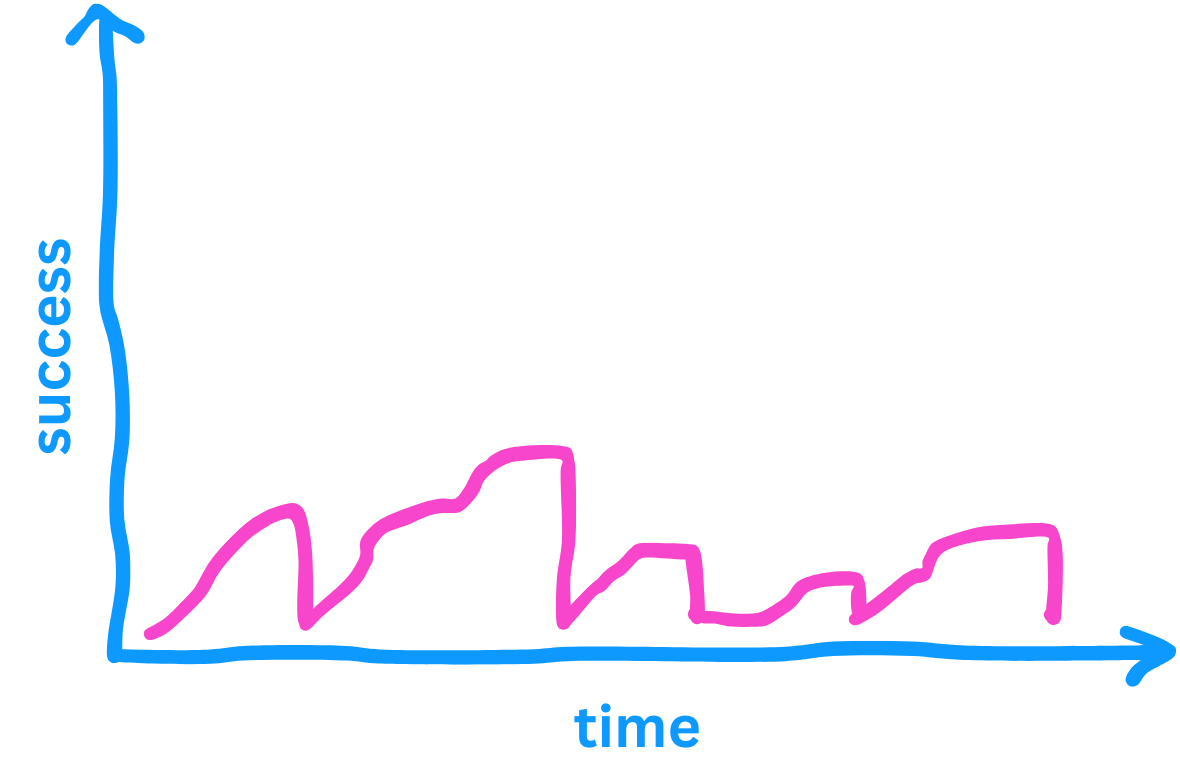From Dead Ends to Breakthroughs: My Journey in Google Labs
Lessons from Building the Gemini API
The past year has been a wild ride for me, with a series of product launches, each more exciting than the last. The highlights include:
PaLM API [March 14, 2023] - Google’s first entry into the world of Generative AI APIs, enabling developers outside of Google to build with our groundbreaking models
Gemini API & Google AI Studio [Dec 13, 2023] - we introduced our newest family of models to the world, built from the ground up to be multimodal, starting with both text/code and vision understanding
Gemini 1.5 Pro with 1 Million Context [February 15, 2024] - we introduced the next iteration of our Gemini models which support up to 1 million tokens
Gemini 1.5 Pro with Audio Understanding [April 9, 2024] - we launched a new capability for our model to allow it to natively understand audio (and video) input
At first glance, it can seem like I somehow landed in the perfect place at the perfect time and that success was almost guaranteed. The reality, however, is a different story. The path to building the Gemini API and Google AI Studio wasn't a straight shot. It was paved with dead ends and explorations that ultimately led nowhere. This is the part of the process that isn’t often talked about - and I want to spend some time zooming in here to help frame how I look at the three main paths of early product development.
How It All Started
My journey at Google Labs began in 2022, after a five-year stint working on Google Assistant's speech and camera features. A chance encounter with my former engineering VP at a cafe led me to this new team, which was focused on "Language Applications," fueled by some exciting advancements in Generative AI and Large Language Models. It felt like the perfect next step, and I eagerly joined the team.
One of the initial concepts I tackled was a novel approach to search and task execution, which we referred to as "The Construction Engine." The core idea was to address the fact that many people use search engines not just for information but as a starting point to accomplish a specific goal. We aimed to go beyond simply providing answers and actually help users execute their intended tasks. For a couple of weeks, I delved into this concept, envisioning a future where search engines could seamlessly bridge the gap between information and action. Take for example a search for “long term airport parking sfo”; rather than just return a set of search results, what if the result was a reservation for a spot in a nearby long term parking garage, for the correct dates of my trip, and the driving directions waiting for me the morning of…
However, despite the potential for this, even with companies like Yohana and Adept getting some notice in this broader space, I made the difficult decision to shut down the project. It felt like the technical capabilities we were working with at the time simply weren't mature enough to effectively solve the problem. While I still believe in the idea's potential, I recognized that the timing wasn't right back then (with the advancements in multi-agent frameworks and other technologies starting to evolve, the "Construction Engine" may soon be possible).
This experience and several others like it reinforced a valuable lesson: timeboxing explorations and being willing to shut down ideas that don't show promise within a reasonable timeframe is crucial. This approach ultimately allowed me to land on an opportunity that ended up panning out – the Gemini API and Google AI Studio.
Yet when we start on the journey of building a new product, it oftentimes feels like the goal should be a smooth, upward trajectory towards unicorn status. We aspire to build a product that revolutionizes its space with quick market validation and explosive growth. But the reality of product development is rarely so straightforward. When first starting out on a new endeavor, I find it helpful to think about three high-level paths a product can take; knowing which path you’re on is essential for determining what your next steps should be.
Path 1: The Unicorn Trajectory
This is the dream path, the one we all strive for. It's the story of an idea that takes off, experiences rapid growth, and achieves widespread market adoption. These types of outcomes get the most attention in the press, but they are very rare (and probably had their own fair share of stops and starts behind the scenes!). If your product is part of the vast majority that does not see this growth, it does not mean it's a failure. There are other growth trajectories.
Most importantly, this almost certainly won't be the first path you’ll find yourself on. Rather, you are likely to land on one of the following two - and it’s important to know which one it is!
Path 2: The Exploration Roller Coaster
This path is characterized by a cycle of ideation, exploration, and abandonment. It's the path of "trying out ideas" – brainstorming, validating, and ultimately deciding to move on when the concept doesn't have the legs to carry it forward. This path can feel frustrating, like a series of false starts. But it's crucial to remember that each abandoned idea is a learning experience: it’s honing your skills and bringing you closer to that breakthrough concept.
This is similar to my journey. I started by trying to build a “Construction Engine”, and while that didn’t pan out, it led me down the path of building out the Gemini API and Google AI Studio.
Path 3: The Plateau Trap
This path is the most dangerous, as it can easily be mistaken for the unicorn trajectory. You start with an idea that shows promise, gains initial traction, and achieves a decent user base. But then growth stalls. You find yourself stuck on a plateau, unable to break through to the next level. This is where the sunk cost fallacy can trap us, leading us to double down on a product that might be better off abandoned.
When building new products, you should be brutally honest with yourself to make sure that you aren’t caught in this situation. If you are, the best thing you can do is turn this path into the first hill on the rollercoaster above. Shut things down, and start over!
Learning from Shutdowns
Shutting down a project is never easy, but it is almost always a valuable learning experience. Instead of viewing it as a failure, consider it a strategic pivot towards a more promising future opportunity. Document your lessons learned, share them with your team, and use them to inform your future endeavors. Remember, the path to success is often paved with abandoned ideas.






